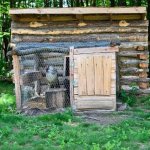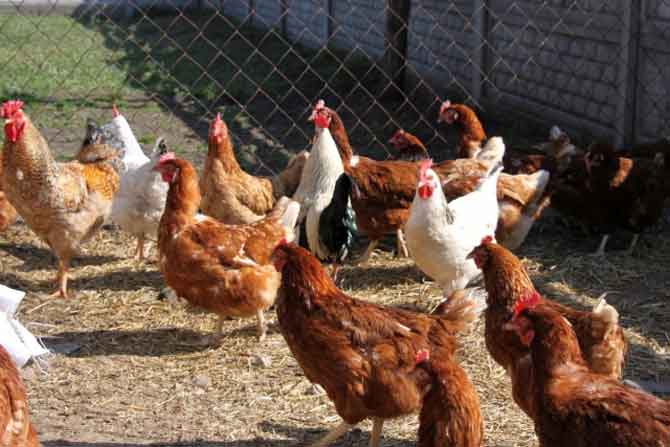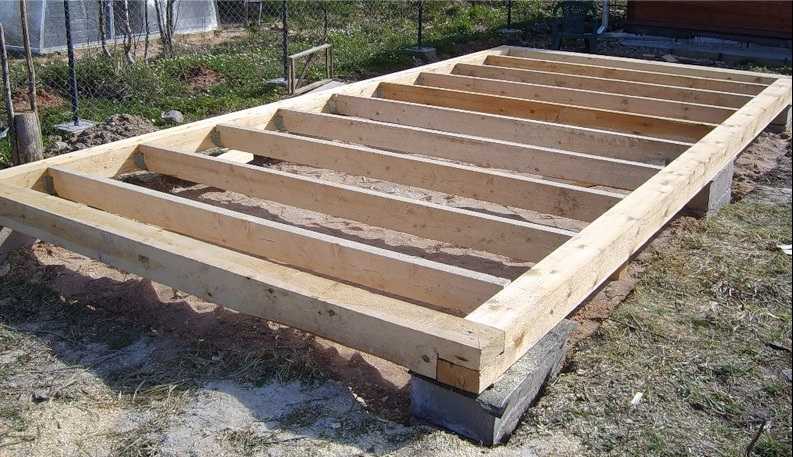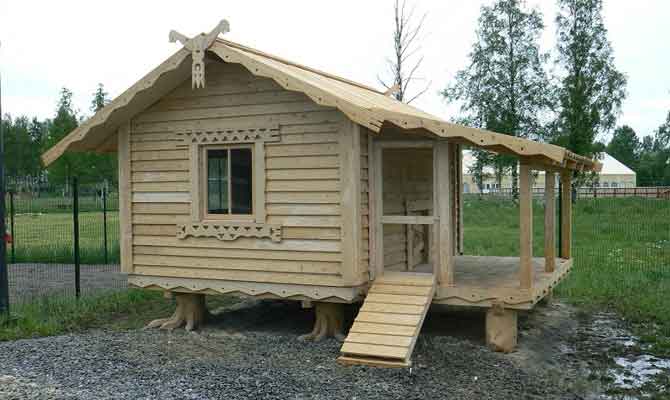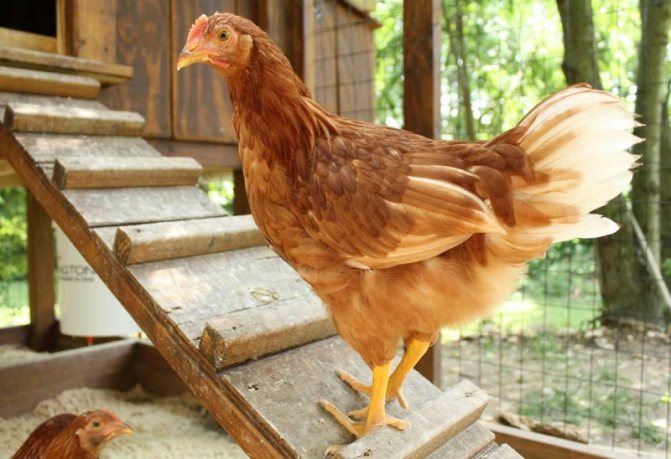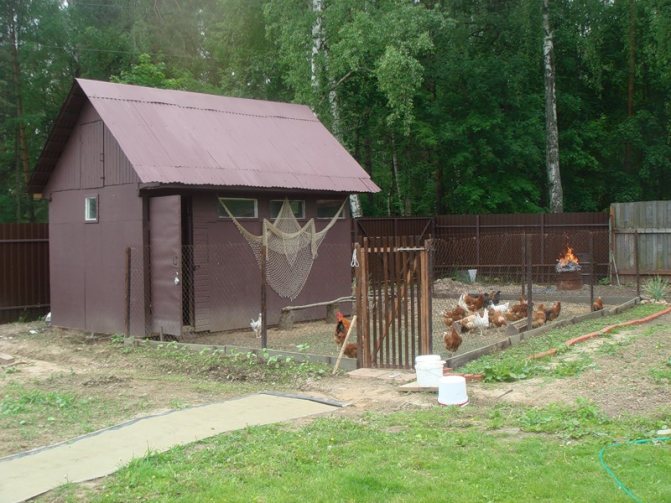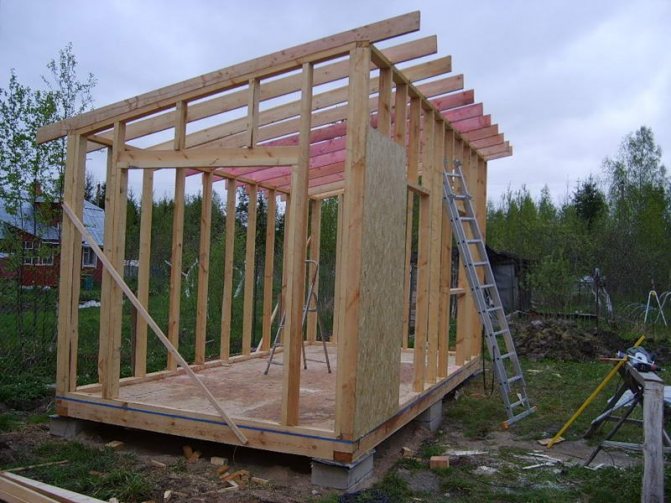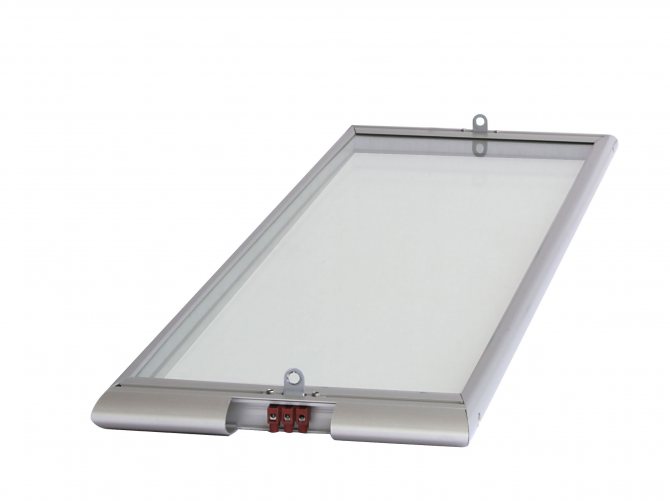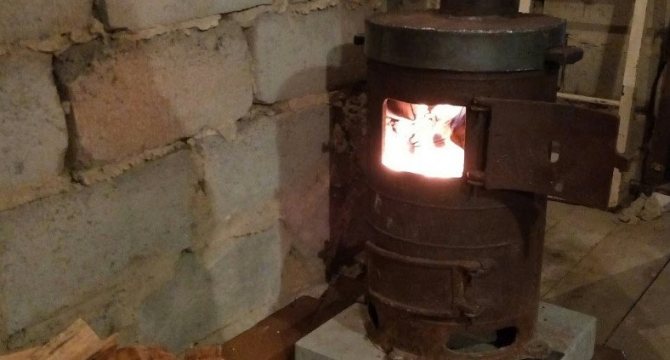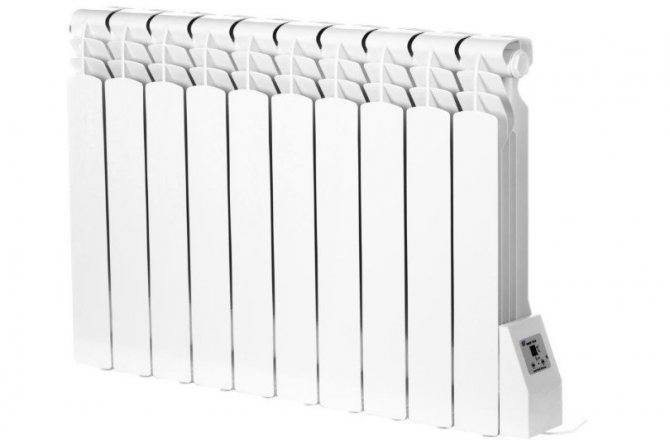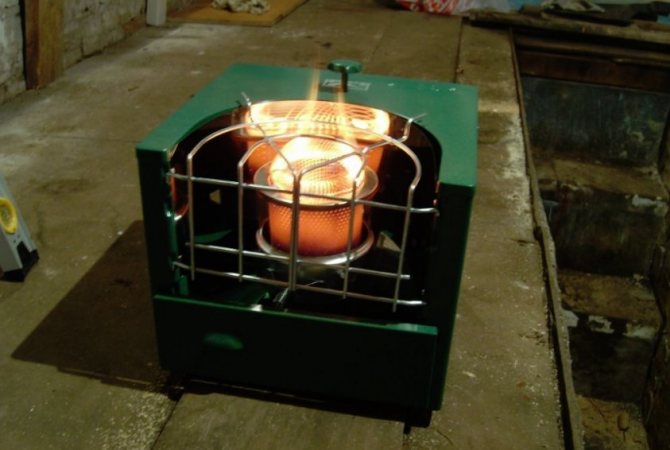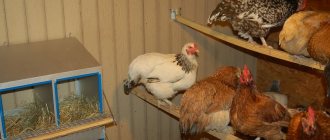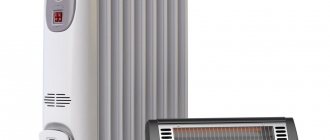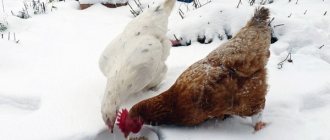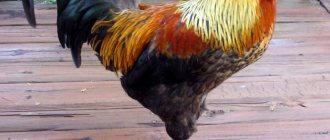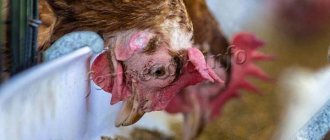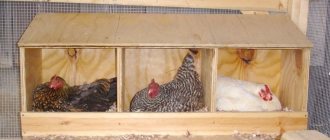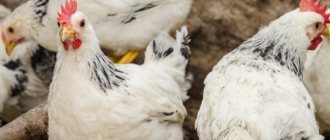»Poultry» Chickens »Construction of a barn for chickens
0
460
Article rating
Breeding chickens are engaged even in the country. Caring for a bird does not take much time, and building a chicken shed with your own hands is easy. The main thing is to think over all the nuances and create a drawing of the future building before starting construction.
It's easy to build a chicken shed with your own hands.
How to choose the right place
Before you start designing a dwelling for chickens, you need to choose a place where it will be located. Experienced breeders know that a not very pleasant smell comes from the chicken coop, so it is recommended to build a dwelling as far from home as possible.
Choose a place to build on a slightly elevated position to eliminate the possibility of flooding during the rainy season. A compost pit or outdoor toilet should not be located next to a barn, this is not a norm for hygiene reasons.

It is recommended to build a chicken coop in an area with a large free space, since in addition to the premises, it will also be necessary to equip a place for walking the bird. It is recommended to build a shed for chickens on the sunny side of the site, which is protected from drafts and wind by shrubs or trees.
Do-it-yourself shed for chickens: basic requirements for high-quality construction


Chicken coop
If you are striving to build a really high-quality chicken coop, then adhere to a few simple requirements.
- The main structure must necessarily be capital, made of concrete, brick or (as in this case) from boards.
- Livestock safety must be a top priority.
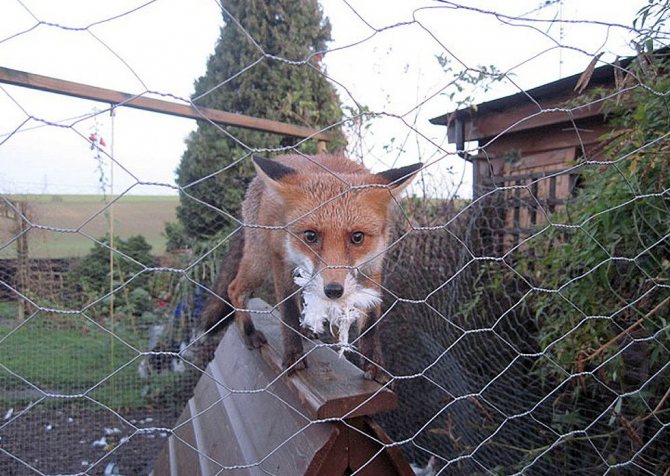

Livestock safety must be a top priority - The barn must be divided into several sections - for example, a compartment for feed, tools, etc.
- When building, try to comply with sanitary and hygienic requirements.
- Keep chickens in separate groups, depending on the purpose (meat, egg, etc.).
- Take care of high-quality lighting of the barn, equip ventilation and a heating system.
How to make a chicken shed yourself
To simplify the task of building a barn, it is necessary to break down the entire scope of work into points and consider each of them in more detail.


Erection of the foundation and floor
The need for a foundation increases when 20 or more individuals are kept in a barn.
For the chicken coop, a columnar foundation is being erected. To make the base in this way, you must:
- Dig holes: 70 cm deep and 50 cm wide.
- At the bottom of each pit, crushed stone and sand are poured, on top of which it is necessary to lay 2 bricks, cover with cement mortar.
- Next, the brick - cement mortar is alternated until the foundation pillars rise above the ground up to 30 cm.
- The empty space between each curbstone is covered with large rubble, which will not allow excess moisture to enter the chicken coop and protect the chickens from predators.
- The foundation is left for 5 days so that it adheres well and becomes strong.
It is better to do the floor of the chicken coop in 2 layers in order to exclude drafts in the room. The base is made of unedged boards, which are covered on top with a layer of waterproofing in the form of roofing material and insulation is added. Edged boards are laid on top of the insulation, reliably connecting them to each other.
Video: erecting a foundation and floor for a barn
Building walls
To install the frame, a 5x10 cm edged board or a 10x10 cm beam is used.
- The beam is laid along the perimeter of the foundation.
- The void that has formed as a result of the formation of a rectangle from the boards is filled with a bar (it is installed on the edge to increase the rigidity of the structure).
- Next, the boards are knocked down into a frame, which will then be used to attach the OSB sheets.
- The sheets will be attached at the end of the roof installation.
- Before fixing the OSB sheets, it is necessary to mark the holes in the frame for windows and doors.
- The sheets are attached to the timber frame with self-tapping screws.
Video: building walls for a barn
In order for the shed to be warm, in the voids of the frame, it is necessary to place insulation on the inside, for example, mineral wool or foam. OSB sheets are also nailed on top of the insulation, from the inside of the hen house, thus smooth walls are obtained.
Roof and ceiling construction
In order to avoid difficulties in the construction of the roof, it is recommended to make it single-pitched, keeping a slight slope. This happens in several stages:
- To make a slope, several strips of timber are nailed onto 1 part of the structure.
- Keeping equal gaps, attach the remaining strips of timber to the raised part of the base and to the opposite side.
- The roof is covered with slate from above.
- Under the slate, the roof is insulated in the same way as the walls.
Video: building a roof for a barn
We make doors and windows
Doors and windows must be foreseen in advance and done not after the completion of the construction of the walls, but directly in the process.
- First of all, take measurements that will ensure the correct marking on the frame of the chicken coop, as well as on the OSB sheets.
- Using a saw, make the necessary holes for the windows and doors.
It is better to make windows and doors made of wood, windows can be made by yourself if you have the skills to work with glass, but it is best to order them from a specialist. Doors are easy to make yourself. For this you need:
- In accordance with the markup, make a wireframe.
- Frame the frame with OSB sheets.
- Fill the inner part of the door with insulation.
Video: installing windows and doors in a barn
Types of chicken coops
Today on the Internet you can find drawings of a wide variety of chicken sheds. But conditionally, they are all divided into two main types:
- Winter. Suitable for poultry keeping all year round.
- Summer. Such buildings are also referred to as seasonal. They are used to keep poultry during the warm season.
Each of the listed types of poultry house assumes its own characteristics and nuances of construction.
Winter
Winter poultry houses involve year-round keeping of chickens, therefore, they are especially careful about their planning and construction. It is worth noting that such a building is being erected not for a season, but for several years. Therefore, it is placed permanently and the location is clearly planned.
Before installation, be sure to make a solid foundation. Walls are built from thick wooden planks, brick or stone. When using boards, each wall must be insulated. Insulation materials are also laid under the roof and in all the cracks that remain during the construction process.
In the winter chicken coop, artificial lighting must be provided. The number of lamps is selected based on the area of the building. Also, it is mandatory to equip a walk near the barn. It should be equipped with a roof, and the north wall of the site should be made of dense material without gaps.
Summer
Summer-type constructions are used to keep poultry exclusively in the warm season. As a rule, they are used in small subsidiary farms, the owners of which purchase several birds in the spring to obtain eggs, and slaughter them in the fall.
Such a building is not permanently located for several seasons.In addition, building a shed for chickens in the summer version is much easier than a major winter one.
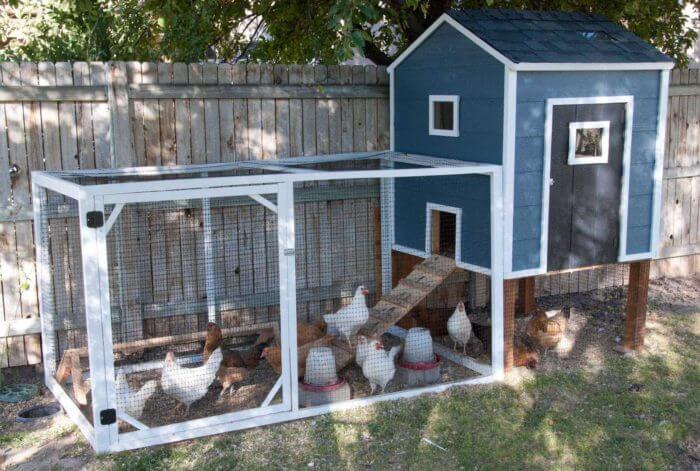

The design of such a poultry house can be very different. For several birds, you can build a small wooden booth with a mesh extension. Also, breeders often purchase ready-made models of summer chicken coops, consisting of sandwich panels. After purchase, such a product is assembled at home in a couple of hours; assembly does not require special skills.
Ready-made portable chicken coops, which are manufactured by individual enterprises, are also popular. This design assumes light weight and special wheels for ease of transportation.
But regardless of the option chosen, each summer chicken coop must have the following elements:
- the barn itself;
- small walk;
- drinkers and feeders;
- perch;
- the nest in which the hen will lay its eggs.
Microclimate
It is very important not only the correct construction of the barn, but also the creation of the necessary conditions for the normal life of chickens.
Ventilation
The room in which the chickens will live must be well ventilated in order for the bird to be healthy. Ventilation is especially important in summer, in order to avoid the development of microbes, parasites, timely air purification and drying of the litter.
Typically, ventilation is a hole made in opposite walls. Such holes necessarily have latches so that they can be closed in cold weather.
Did you know? The period of darkness for chickens is very important for the formation of bone tissue, changes in calcium metabolism, which is responsible for the density of the shell, the development of immunity.
Lighting
To illuminate the house, you can use fluorescent lamps with a power of at least 40 watts. For every 4 square meters of the room, one device is installed. The light source must be positioned so that there is a distance of at least 2 m to the floor.
When organizing lighting in a hen house, it should be borne in mind that in such a room there is always high humidity, therefore, when making wiring, installing lamps and switches, it is necessary to place the shield outside the house of the hen house. To prevent the chickens from being burned or electrocuted, a thick shade is installed on the lamps.
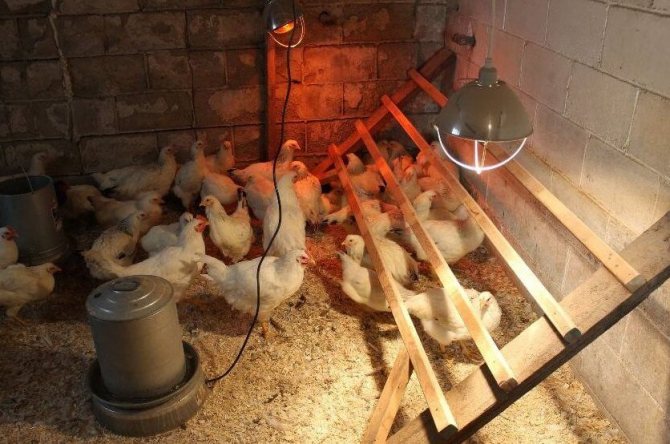

In winter, lighting in the hen house allows you to stimulate the productivity of layers, optimally if the daylight hours are extended to 13 hours a day. Be sure to turn on the lighting early in the morning, and in the evening, when it gets dark outside, the light should be on for at least another 3 hours in the chicken coop.
In order not to get up very early every morning, and not to visit the hen house late in the evening, it is recommended to set a timer that will control the periods of turning on the light in the house on your own.
Find out what kind of lighting should be in the chicken coop.
Temperature + how to insulate for the winter
Chickens are resistant to temperature extremes, therefore the air temperature in the room can be within the range of + 5 ... + 23 ° С. With an increase in the air temperature in the hen house, the bird will feel uncomfortable when the value goes beyond +30 degrees, the chicken may stop laying, the chickens become vulnerable to infectious and parasitic diseases.
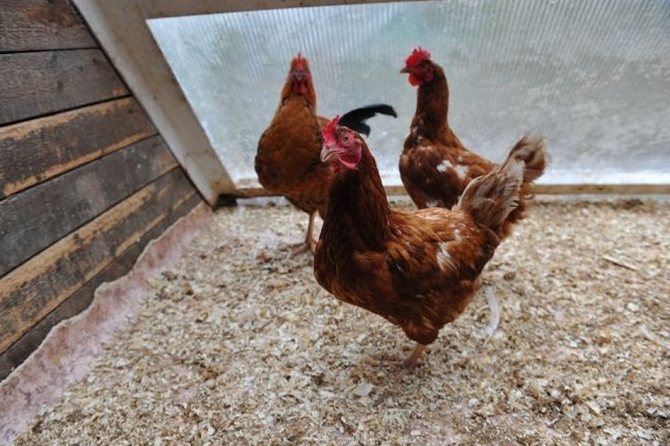

If, in winter, the air temperature in the hen house drops below +5 degrees, the room should be insulated. To insulate the shed, a thick layer of bedding (straw, sawdust) is poured onto the floor. Initially, natural material is sprinkled on a floor 10 cm thick, then, as it subsides, it is poured 2 more times, increasing the amount of the embankment to 20 cm.
Are chickens afraid of frost and can they winter in a greenhouse
Important! With minus indicators, the productivity of chickens will drop sharply, but at the same time they will not die and will be able to survive.
If the birds have been acclimatized to the environment, the lowest temperature they can tolerate is +7 ° C.
In this case, the chicken coop should be well ventilated and not have drafts. Some summer residents use a greenhouse as a dwelling for chickens. This is the most suitable place for birds, there they will receive enough light and can dig in the ground all day.
Walking area
The walking area must be connected to the barn so that the chickens can freely get from the closed into the open space. To do this, a small window is made in the barn at the bottom of the wall, through which the chickens will get outside.
You will be interested in learning how to properly breed and keep chickens in the country.
The walking area should be of sufficient size so that the chickens can freely walk and be active. The walking area should be at least 2 or 3 times the size of the barn.
It is better to enclose it with a fine mesh, the lower part of which, for the sake of safety and protection of chickens from predators, should be dug into the ground 10-15 cm. The upper part of the site is also covered with a net (also for safety purposes).
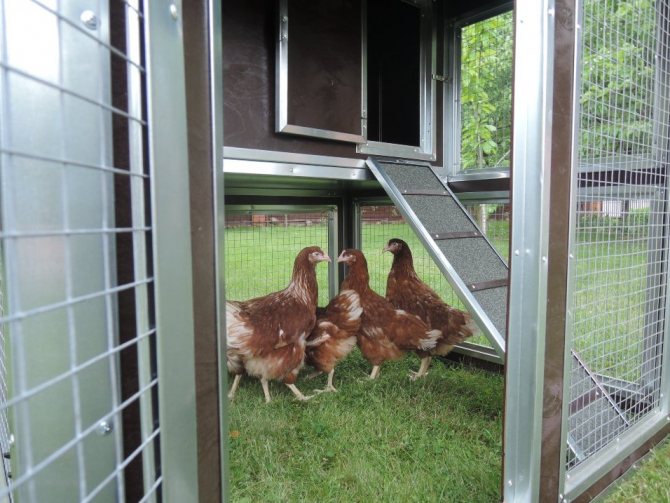

Thus, building a chicken coop with your own hands is not so difficult, the main thing is to follow the basic recommendations for construction. In order for the chickens to feel comfortable and healthy in the room, it is important to properly equip the chicken coop and observe the special microclimate in the room.
Floor insulation
Thermal insulation work on the arrangement of the chicken coop begins to be done from the floor. Any material is chosen from insulation. This can be moss peat, straw or shavings with sawdust.
To create a temperature of + 26 ... + 28 ° C, a deep bedding is required. If you lay a thin layer of insulation, then the thermal insulation properties will be low.
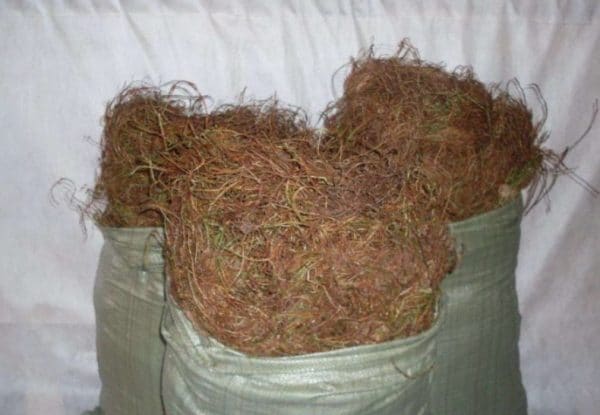

Due to its low thermal conductivity, peat moss is often used as an insulating material.
Moss peat for warming the floor of a chicken coop
Moss peat is a versatile material with absorbent properties. It efficiently absorbs moisture and chicken droppings.
Thanks to this, unpleasant odors do not arise in the room, which makes the material an ideal insulation. Birds do not suffer from dermatitis and various skin diseases, as their feet always remain dry.
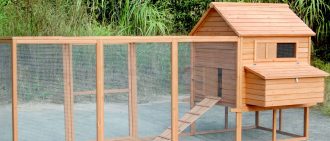

In the spring, the litter is removed and the beds are fertilized with it.
Straw as insulation for a chicken coop
The use of straw is one of the most popular floor insulation options., since it tends to accumulate heat and retains it for a long time.
The material is laid with a thickness of more than 20 cm. During operation, the straw is caked, and its layer becomes smaller. As a result, the room temperature decreases.
To prevent this, 10 cm of straw is regularly added on top. To make the bedding soft, dry grass is laid on top of the straw. The material to be laid must be of high quality, without mold. Otherwise, mold will spread all over the flooring and expose birds to serious illness.
Chips and sawdust for heating the chicken coop
Tree shavings are good bedding for a chicken coop. It is sprinkled in a thin layer on the main flooring to give it softness.
Coniferous sawdust is considered the best because it contains essential oils. The floor surface is covered with coniferous sawdust and small shavings in a ratio of 1: 3. The litter tends to cake, so it is loosened regularly.
Heating
It is difficult to overestimate the importance of properly arranged heating for a winter chicken coop. All owners of poultry houses know this: at above-zero temperatures, laying hens feel great and rush well in winter.
Electricity
If electricity is supplied to the chicken coop, you can heat it with fan heaters or infrared lamps. Fan heaters cheaper to buy programmable. Not in the sense that they are cheaper, but in the fact that they will wind less electricity during the winter. There are two types of automation: temperature and time. Naturally, for heating the chicken coop, it is better to take one that reacts to temperature.As soon as it gets colder, say to 0 ° C, it will turn on, as it rises to + 3 ° C, it will turn off. In general, you choose the settings yourself. The method is effective and quite popular.
Chickens are often heated IR emitters... But they do not heat the air, but objects that fall into the zone of action of the rays. They are hung over the perches and several of them above the floor. If the bird is cold, they gather under them. It can be cold in the hen house, the main thing is that its inhabitants are warm. This is exactly what happens with infrared heating. One caveat: IR lamps burn out from frequent on / off switching, therefore it is advisable to cut them down very rarely. In humans, they burn for months, fortunately, they "pull" electricity a little.
It is also important to know about the peculiarities of the operation of IR heating lamps (there is for lighting, do not confuse). The surface of the lamps heats up, the design of the luminaire itself is not adapted for such loads. Plastic sockets do not hold the lamp well, and finding ceramic ones is a problem. To ensure fire safety, it is best to make a wire cage for the lamp. So the chickens will not be burned and if the lamp falls out, it will not break and the litter will not flare up.
Oil radiators ineffective: high consumption, little heat. Homemade devices with an open coil are effective, but very fire hazardous, and you will have to leave them on. This is too big a risk.
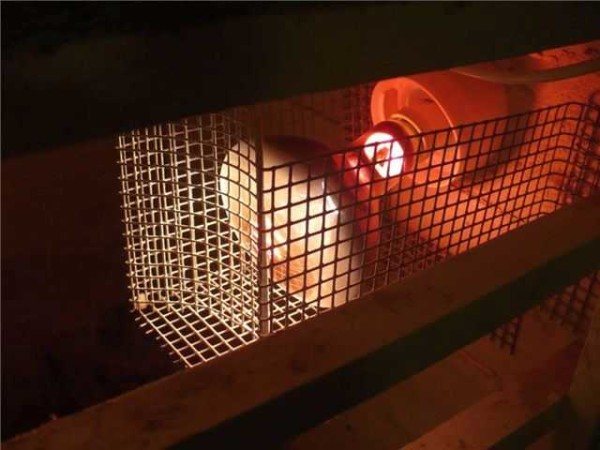

IR heater lamp in mesh casing
Boiler and potbelly stove
There is also a heating option - a boiler and batteries. But these are dreams for the majority. They also heat it with a potbelly stove, wood-burning boiler, or put a small brick stove. And they try to lead the pipe through the chicken coop - so that it gives heat to the maximum. If the stove is iron, it can be overlaid with bricks, like an iron pipe. When heated, the brick keeps heat for a long time. With normal insulation, one firebox is enough for a couple of days.
Heating the chicken coop by decomposing sawdust
There is a way to maintain a positive temperature without heating - due to the heat released during the decomposition of sawdust. But it works only under the condition of normal (at least) insulation. Sawdust is poured onto the floor. The first layer is covered in autumn, before the first cold weather. The layer is about 10-15 cm. It lasts a month and a half.
Such a bedding is much better than hay: chickens do not get sick, since sawdust regulates moisture well. They also love to rummage in the litter, and are constantly busy with this, so that layers do not get fat even with abundant feed and limited walking.
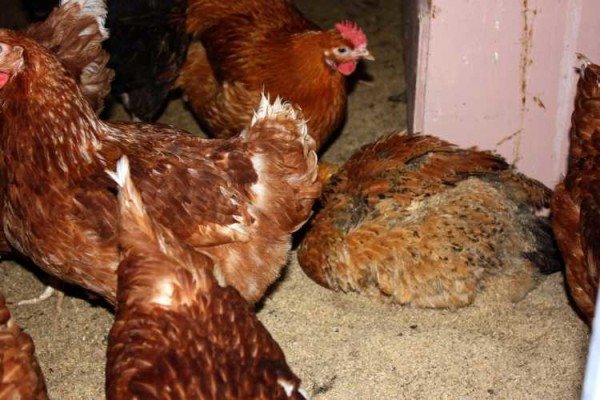

Chickens with sawdust feel great even in cold weather
After 30-50 days, add a fresh portion of sawdust (you can tell by its smell and appearance). And this time, too, about 10 cm. Then - more. By the end of winter, a layer of about 50 cm has accumulated. Moreover, even in decent cold weather, the temperature inside the hen house keeps at least 0 ° C, which is enough for layers. If you bury yourself in such a litter, there will be about + 20 ° C. What chickens do in the cold: they dig holes and sit in them. This is sawdust preyut: a decomposition reaction takes place with the release of a large amount of heat.
In the spring, the whole mixture is taken out into a compost heap, after a while there will be excellent fertilizer. But one more thing: in the fall, you have to fill a high board in front of the door: so that the litter does not spill out. It is inconvenient to walk, but the draft from under the door is eliminated.
What to build from
You can inexpensively build a chicken coop from cinder block, foam concrete. If there is a place nearby where there is clay, you can drive out the walls using adobe technology (hut or dry bricks).
If you need a budget warm chicken coop, you can make it like a dugout. The walls can be brought out half a meter above the level, in the south, well-insulated windows with double or triple glazing can be made. It is good to insulate the piece that protrudes above the ground and the roof. For warmth, all walls, except for the southern one, can be covered with earth. If the top is still covered with snow, it will be quite warm.
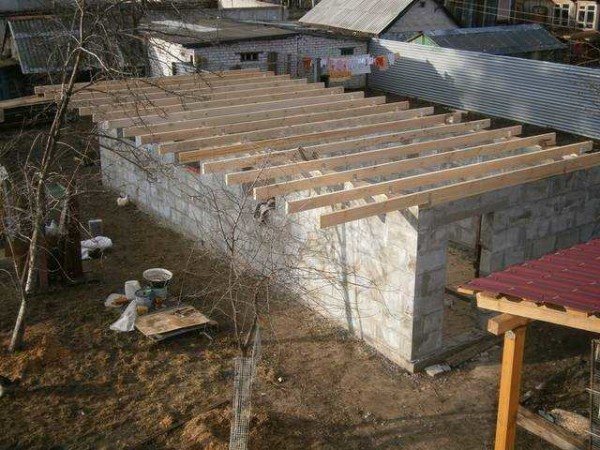

Those who are seriously going to engage in poultry breeding should think about building a chicken coop from foam concrete: it is light, warm
Another, perhaps, the most popular and economical option is a do-it-yourself frame chicken coop. Since the rooms are usually small, the timber for the frame needs a small section and it does not take much. You can sheathe the frame with a board, plywood, OSB and other similar material. Lay insulation between the racks and sew on the other side. To prevent mice from settling in the insulation, the people came up with the idea of covering the insulation on both sides with a metal mesh with a fine mesh. This makes the building somewhat more expensive, but fighting the mice is more expensive. It turns out a warm chicken coop and the thickness of the insulation depends on the region. You can focus on the recommendations for the construction of frame houses.
A chicken coop from a log or from a thick bar can do without insulation in the middle lane. Only the caulking seams need to be sewn up with slats. Not so much from drafts as from chickens: so as not to pull the tow or moss.
Typical mistakes
A good DIY project can be done with a lot of work. However, mistakes do happen. For example, an illiterate choice of materials can reduce your efforts to zero: it is better not to use concrete, brick, cinder block or natural stone at the stage of building a poultry house. They do not retain heat well and are generally not always practical. The layout inside the hood sometimes also turns out to be incorrect.
Take the construction of a poultry house seriously, and your domestic layers over time will delight you with the intensity of growth and good egg production.
Internal arrangement of the poultry house
After completing the preparatory work, it is necessary to start arranging the chicken coop.
Perches
The most important element in a hen house is the perches. The number and length of perches must be selected based on the number of birds that will live in the chicken coop. For each individual, it is necessary to allocate 20-30 cm of free space.


To save space, perches can be installed not in one, but in several rows. The bottom rail should not be too close to the floor, the optimal height is 80 cm.

